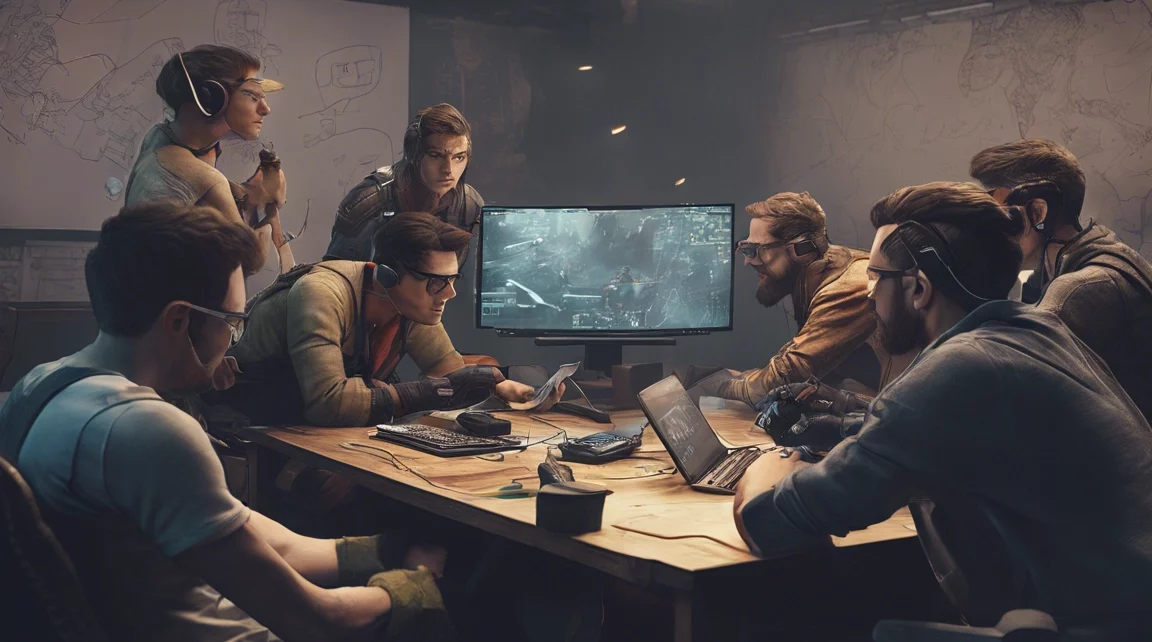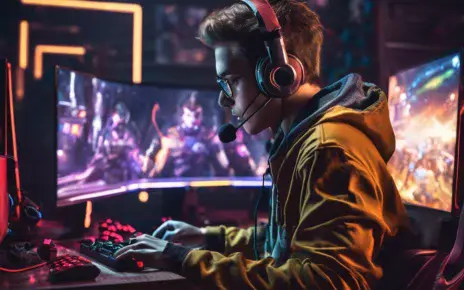Video game development is a dynamic and rewarding field, but it comes with its own set of challenges. From initial concept to the final release, developers face numerous hurdles that require technical skills, creativity, and adaptability. Whether you’re an aspiring developer, a hobbyist, or just curious about the inner workings of game creation, understanding the key challenges in video game development offers insight into the complexity behind your favorite titles.
In this post, we’ll dive into the most common obstacles developers face and how they overcome these hurdles to create engaging, immersive games.
Managing Scope and Expectations
One of the biggest challenges in game development is managing the scope of the project. Developers often have grand visions for their games, packed with features, complex storylines, and innovative mechanics. However, balancing creativity with practical limitations—such as time, budget, and team size—can be difficult.
- The Challenge: It’s tempting to keep adding features, but too many ideas can lead to “feature creep.” This often results in delayed releases, bloated mechanics, or unfinished features.
- Solution: Developers must prioritize and cut features that don’t serve the core gameplay experience. Using a detailed game design document (GDD) and sticking to timelines helps keep the project on track.
Expert Insight: “Scope management is essential. You need to have the discipline to say ‘no’ to good ideas that don’t fit into the project timeline or budget.” — John Carmack, Co-Founder of id Software
Technical Limitations and Bugs
Even the most well-planned games run into technical challenges during development. From optimizing for multiple platforms to handling in-game physics, technical issues can cause significant delays and frustration.
- The Challenge: Bugs, glitches, and performance issues often crop up during development. Compatibility across different platforms (PC, consoles, mobile) also adds layers of complexity.
- Solution: Thorough play testing and debugging are essential. Many studios also invest in automated testing tools and version control systems to catch bugs early. Additionally, developers must optimize games for different hardware, ensuring smooth performance across devices.
Expert Insight: “No game is bug-free at launch, but minimizing critical bugs and optimizing performance across platforms is what separates great games from forgettable ones.” — Amy Hennig, Game Director and Writer
Balancing Game Mechanics
Creating balanced game mechanics is crucial for providing a fair and enjoyable player experience. Whether it’s adjusting character abilities in a fighting game or tweaking weapon stats in a first-person shooter, getting the balance right is one of the toughest tasks for developers.
- The Challenge: Poorly balanced mechanics can frustrate players, making a game too easy or unfairly difficult. Multiplayer games, in particular, require extensive fine-tuning to ensure no single character or strategy dominates.
- Solution: Developers use feedback from beta testing, community input, and internal testing to continually adjust and fine-tune mechanics. Regular updates and patches after release also help to maintain balance as the player base grows and new strategies emerge.
Expert Insight: “Balancing a game requires both data and intuition. You can rely on stats, but ultimately, it comes down to how the game feels to the player.” — David Sirlin, Game Designer and Balancing Consultant
Storytelling and Narrative Design
Compelling storytelling is a key element for many games, but crafting a meaningful narrative can be particularly challenging. Unlike traditional media, video games require interactive stories where the player’s choices can influence the outcome, adding layers of complexity to narrative design.
- The Challenge: Creating an engaging, coherent story that aligns with gameplay mechanics and offers meaningful player agency is no small feat. Ensuring the narrative feels dynamic without being repetitive can also be a significant hurdle.
- Solution: Collaboration between writers, designers, and programmers is essential. Techniques like branching narratives, dialogue trees, and multiple endings help provide depth and player choice while keeping the story immersive.
Expert Insight: “The best stories in games are those where the narrative and gameplay are inseparable. If you take away the interactivity, the story wouldn’t work.” — Neil Druckmann, Creative Director at Naughty Dog
Time Constraints and Crunch Culture
Meeting deadlines is a challenge in any industry, but the gaming industry is notorious for “crunch,” where developers work long hours under high pressure to meet release dates. While crunch can sometimes lead to breakthroughs, it also leads to burnout, mistakes, and a toxic work environment.
- The Challenge: Game development often faces tight deadlines, whether it’s for a major studio release or an indie game. Crunch time can push developers to their limits, sacrificing quality of life and sometimes leading to rushed or incomplete games.
- Solution: Studios are beginning to adopt healthier work practices, spreading development tasks more evenly across the timeline and avoiding excessive overtime. Planning ahead and allowing time for delays and unforeseen issues can also reduce the need for crunch.
Expert Insight: “Crunch isn’t sustainable. The best games come from studios that foster creativity and teamwork, not exhaustion.” — Brenda Romero, Game Designer
Monetization and Player Expectations
In today’s gaming landscape, developers must navigate monetization carefully. From microtransactions to downloadable content (DLC), balancing the need for revenue with player satisfaction can be difficult.
- The Challenge: Players expect value for their money, and overly aggressive monetization models can lead to backlash. Developers also face challenges in creating content that justifies DLC without making the base game feel incomplete.
- Solution: Transparency is key. Communicating openly with the player base about monetization strategies can help avoid backlash. Offering real value through post-launch content, such as new levels, characters, or cosmetic items, keeps players engaged without feeling exploited.
Expert Insight: “Players are smart. They can spot when a game is designed to squeeze money out of them rather than provide an enjoyable experience.” — Jason Schreier, Gaming Journalist and Author
Marketing and Community Engagement
It’s not enough to create a great game; you also need to get people excited about it. Marketing and community engagement play crucial roles in a game’s success, but they pose unique challenges, especially for indie developers.
- The Challenge: With thousands of games released each year, standing out in the crowded market is tough. Additionally, maintaining a strong, engaged community before and after launch requires consistent communication and interaction.
- Solution: Start building hype early with teasers, trailers, and developer blogs. Engaging with your community on social media, forums, and live streams helps build a loyal fan base. Developers can also leverage platforms like Twitch and YouTube to promote their games through influencers.
Expert Insight: “Good marketing starts with a great game. But connecting with your audience and building excitement early on can make or break your launch.” — Rami Ismail, Indie Game Developer
Conclusion
Video game development is a complex, multifaceted process filled with challenges. From managing scope and technical limitations to crafting compelling stories and engaging communities, developers must juggle a wide range of tasks to bring their vision to life. Despite the difficulties, overcoming these challenges can lead to groundbreaking games that captivate players and define the industry.
If you’re considering a career in game development, be prepared for the ups and downs. But know that the challenges you face will push you to grow, innovate, and create unforgettable gaming experiences.
What challenges do you think are the toughest in video game development? Share your thoughts in the comments below!




